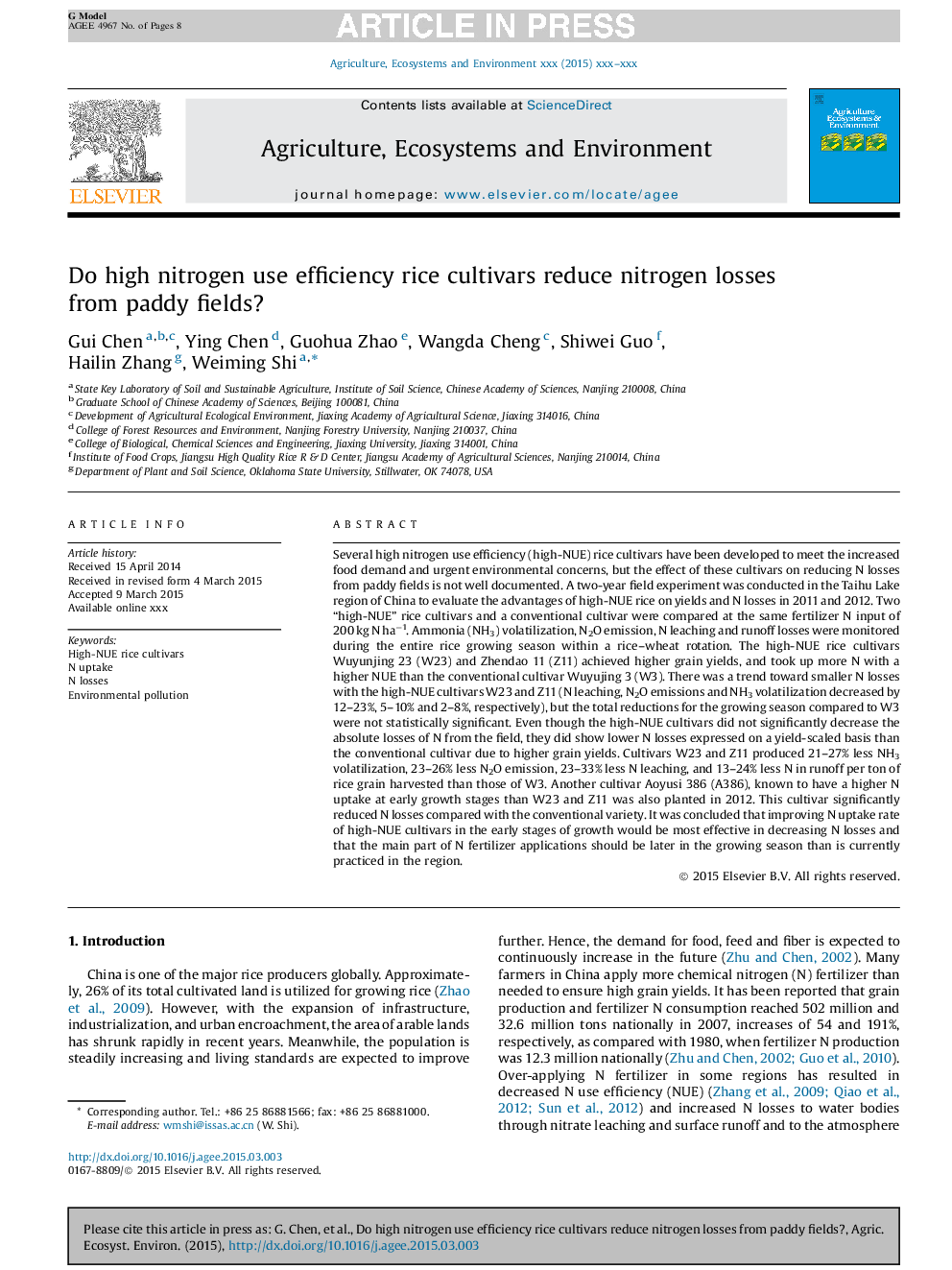| Article ID | Journal | Published Year | Pages | File Type |
|---|---|---|---|---|
| 8487685 | Agriculture, Ecosystems & Environment | 2015 | 8 Pages |
Abstract
Several high nitrogen use efficiency (high-NUE) rice cultivars have been developed to meet the increased food demand and urgent environmental concerns, but the effect of these cultivars on reducing N losses from paddy fields is not well documented. A two-year field experiment was conducted in the Taihu Lake region of China to evaluate the advantages of high-NUE rice on yields and N losses in 2011 and 2012. Two “high-NUE” rice cultivars and a conventional cultivar were compared at the same fertilizer N input of 200 kg N haâ1. Ammonia (NH3) volatilization, N2O emission, N leaching and runoff losses were monitored during the entire rice growing season within a rice-wheat rotation. The high-NUE rice cultivars Wuyunjing 23 (W23) and Zhendao 11 (Z11) achieved higher grain yields, and took up more N with a higher NUE than the conventional cultivar Wuyujing 3 (W3). There was a trend toward smaller N losses with the high-NUE cultivars W23 and Z11 (N leaching, N2O emissions and NH3 volatilization decreased by 12-23%, 5-10% and 2-8%, respectively), but the total reductions for the growing season compared to W3 were not statistically significant. Even though the high-NUE cultivars did not significantly decrease the absolute losses of N from the field, they did show lower N losses expressed on a yield-scaled basis than the conventional cultivar due to higher grain yields. Cultivars W23 and Z11 produced 21-27% less NH3 volatilization, 23-26% less N2O emission, 23-33% less N leaching, and 13-24% less N in runoff per ton of rice grain harvested than those of W3. Another cultivar Aoyusi 386 (A386), known to have a higher N uptake at early growth stages than W23 and Z11 was also planted in 2012. This cultivar significantly reduced N losses compared with the conventional variety. It was concluded that improving N uptake rate of high-NUE cultivars in the early stages of growth would be most effective in decreasing N losses and that the main part of N fertilizer applications should be later in the growing season than is currently practiced in the region.
Related Topics
Life Sciences
Agricultural and Biological Sciences
Agronomy and Crop Science
Authors
Gui Chen, Ying Chen, Guohua Zhao, Wangda Cheng, Shiwei Guo, Hailin Zhang, Weiming Shi,
